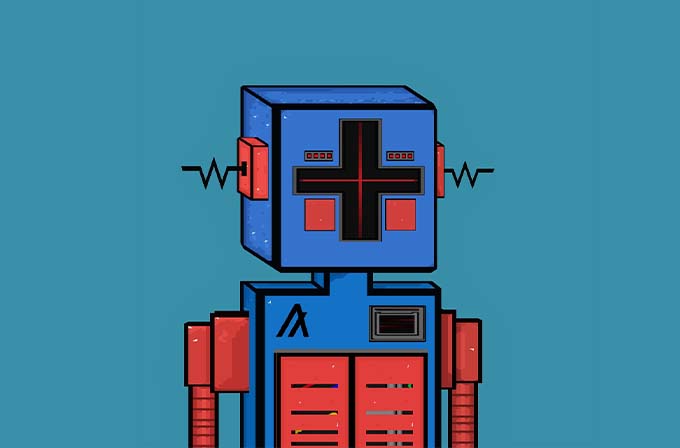What are NFTs?
NFT is an irreplaceable token that can be used to represent any concrete or abstract object: text, images, recordings, digital artwork, game items or characters, domain names, financial instruments, club cards, etc.
Other digital currencies can be regarded as conditionally replaceable tokens. For example, a bitcoin in a user's wallet is equivalent and the same as a bitcoin in another user's wallet (we do not consider passing the block for the time being. traceability to origin by chain analysis tools). However, one NFT token representing one painting is not equal to one NFT token of another user, because these tokens can be different paintings by different artists with different values.
Each NFT token is unique and exists in singular form and cannot be copied. Each of them contains identifying information recorded in the smart contract, and it is this information that makes each NFT different from the other.
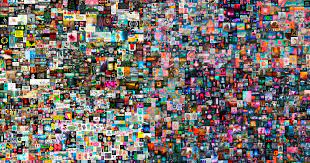
By playing the unique role of NFT, developers can solve the problem of protecting the ownership of digital objects. The information about the owner and its token is fixed on the chain, and the information cannot be replaced or deleted.
How are NFTs produced?
Experiments with NFTs began with colored coins in 2013 and the emergence of solutions such as the trading platform Counterparty in 2014, which made assetization on the Bitcoin chain possible.
In 2017, the NFT project Rare Pepe Directory and the frog Pepe's meme became famous, and in June 2017, the first NFT on the Ethereum blockchain was a project of Larva Labs - pixel portraits of CryptoPunks, initially distributed 10,000 for free Crypto banks are now regarded as valuable blockchain antiques.
The first hype in the history of NFT is CryptoKitties. This project was launched in November 2017. Cats can be bred on the chain. Users can take two NFT cats from which they can produce cats with different rarities that they own or sell. NFT offspring.
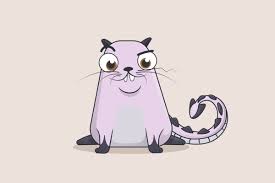
Many projects have begun to experiment with NFT breeding mechanisms and add other game elements. For example, there are layer 2 games being built on top of CryptoKitties by third-party developers. The idea of this kind of game is not to create NFTs for games, but to create games for tokens that already exist. The idea was developed by the Enjin project, which raised 75,000 ETH in an ICO in late 2017, and Eminence from André Cronier.
Cats in layer 2 apps allow users to include NFT cats in ERC-20 tokens. If users cannot afford a token, they can only buy part of it. As of March 11, 2021, the market cap of packaged NFTs is $5.098 million.
Another project with gaming elements is Aavegotchi, which combines the mechanics of the Aave DeFi landing service and the popular Tamagotchi toy.
So-called "hot potato"-style bubble games have also emerged. Their rule is simple: each next NFT buyer pays more than the previous one. After someone purchases an NFT from a developer, and each subsequent resale, the price of the asset is automatically increased according to a specified algorithm.
The tokenization of irreplaceable digital objects is rapidly spreading to card games (Unchained Gods), RPGs (MyCryptoHeroes, Neon District), sports games (F1 Delta Time, Sorare), virtual worlds (Decentraland, Cryptovoxels), Ethereum domains ( ENS), traditional financial instruments (bank insurance).
The tokenization of digital art has received a new impetus: it has become easier to create, trade and collect royalties from NFTs.
All categories of digital objects are actively traded on the market. The NFT production and distribution ecosystem includes dozens of projects.
What token standard is used to issue NFT?
Most non-fungible tokens are issued on Ethereum based on several major standards. The standardization of NFT issuance guarantees a higher degree of interoperability (the ability of blockchains to interact with each other), which allows such non-fungible tokens to be transferred between different decentralized applications.
ERC-721 is the first and most popular implementation of NFTs on Ethereum, extending the functionality of the basic ERC-20 standard. Among them, each token requires a separate smart contract.
Later, other versions of the standard appeared:
ERC-998 is an evolving standard that allows users to create "composite" tokens - a digital asset that "owns" another digital asset. For example, the ownership of a playable character in a computer game is represented by one non-fungible token, while the rights to its equipment are represented by another token. ERC-998 allows users to combine them into one token.
Using ERC-875, multiple collectibles can be sent in one transaction.
ERC-1155 is an improved standard that allows users to use multiple types of tokens simultaneously through a single smart contract. Such contracts can contain both NFTs and normal tokens. It allows users to store a wide variety of items, from armor and weapons to potions and scrolls, each of which can be interchanged if multiple copies of the same type are available. If the game contains thousands of elements, then for ERC-721, users need to create as many independent smart contracts as possible. ERC-1155 allows users to combine ERC-721 tokens into a single contract, each contract storing its own data set. As a result, playable characters consist of all potential NFTs: weapons, armor, special traits, and even other ERC-20 tokens.
Another NFT standard that is being actively researched is Blockchain Bean Asset, or BBA. The author of the Ethereum standard is the Blockchain Gaming Alliance, which includes well-known companies in the gaming market, such as Ubisoft. As part of this standard, the developers intend to integrate the possibility of decentralized storage of content.
NFTs are not limited to Ethereum - they also exist on NEO, EOS, Tron, Flow, Cosmos and other platforms.
The Mythical Games team, in collaboration with game developers and the EOS ecosystem (Greymass, Cypherglass, Meet.One, Scatter, and Blocks.io), plans to launch its own EOS NFT standard: dGoods.
Tron has also attracted game developers. For example, Cookies and EOS game developer Knights intends to migrate to the Tron blockchain. It is planned to unite game projects, at which time the possibility of buying and selling NFTs of two cryptocurrencies will be realized.
What does the NFT ecosystem consist of?
Aggregators: OpenSea (https://opensea.io), wallets, exchanges
NFT funding agreement: NFTX (https://nftx.org/#/), upshot (https://upshot.io), NFTfi (https://nftfi.com)
NFT release protocol: SupeRare (https://superrare.co), zora (https://store.zora.co/introducing-zora), gateway (https://niftygateway.com), rarible (https://rarible .com), foundation (https://foundation.app), mintbase (https://mintbase.io)
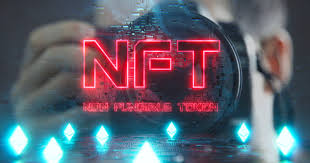
Sidechains and Secondary Solutions
enjin(https://enjin.io/help/efinity)、axie(https://axieinfinity.com)、immutable(https://www.immutable.com)
NFT projects are mainly developed in the Ethereum, Flow and WAX networks and based on secondary solutions and sidechains.
Publishing platforms and marketplaces can be categorized as follows:
Aggregator for buying and selling NFTs.
A universal distribution protocol that supports NFT creation.
Niches: Marketplaces or art publishers dominate, but NFT blogs like Mirror and music marketplaces like EulerBeats are also slowly emerging.
Where are NFTs used?
Images—paintings, illustrations, designs, photography, stock images.
Audio - music, podcasts, radio shows.
Written content - blog posts, tweets, instructions.
Metaverse - 3D models, internal game assets, maps, augmented reality assets.
Video — Movies, Series, Streams, Shows, Videos.
Address Space - IP address domain.
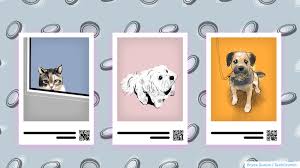
The art market is a combination of auction houses, galleries and distribution agreements.
Nifty Gateway and SuperRare invite reputable creators to participate in the platform themselves.
Other marketplaces, like OpenSea and Rarible, feature more broadly, similar to Etsy or eBay, where creators can showcase their artwork.
OpenSea is the largest NFT marketplace by trading volume and supports the trading of ERC-721 and ERC-1155 tokens, which have been used to create over 4 million unique digital goods.
Collectible NFTs can be traded on the Auctionity platform, which allows users to sell and buy in-game assets in an auction mode.
Designers and artists may be interested in the KnownOrigin trading platform, which launched in February 2018. Using the internal token KnownOriginDigitalAsset (KODA) of the ERC-721 standard, users can purchase artwork and confirm the authenticity and originality of their creations. KnownOrigin offers over 19,000 artworks for sale.
The Pixura project provides templates for NFT marketplaces, and users can launch marketplaces with any ERC-721 token.
How to make money with NFT?
1. Buy a single NFT and then resell it.
NFTs can be purchased from marketplaces such as OpenSea and Rarible. OpenSea allows users to buy and sell NFTs with different assets, but the default currency is ETH.
In the future, it is possible to try to sell the NFT at a price higher than the purchase price.
2. Purchase the local token of the NFT project.
Users purchase RARI governance tokens from Rarible. RARI token holders can vote on project updates and participate in reviews.
They have also shown interest in the AXS token in the Axie Infinity game, and MEME (NFT farming project) in the protocol of the same name. Staking MEME tokens allows users to unlock limited artwork by different artists or collectible cards.
Another governance token is SAND, the in-game currency in the Sandbox platform world.
Another type of asset where NFTs are biased is tokens, or fractional ownership. For example, the sharded coins of the NIFTEX project, users can break down NFT into smaller parts, which are represented by more liquid ERC-20 tokens. A share of a non-fungible token can have multiple owners at once.
Metapurse token B20 works similarly to share ownership of the Beeple 20 Collection.
3. Provide loans to NFT collectors.
Many collectors are interested in lending against NFT collateral. This allows users to create NFTfi marketplaces. If the borrower defaults, ownership of the NFT is transferred to the lender.
4. Buy tokenized ETFs.
The main idea behind the NFTX project is to bring liquidity to NFTs like CryptoPunks by creating a tokenized $PUNK index fund. The community uses governance tokens to govern the protocol.
5. Purchase a tokenized insurance policy.
Yearn.finance and its income insurance project yInsure are popular in the DeFi and NFT space. Yearn.finance tokenized insurance policies can be traded on OpenSea and Rarible marketplaces.
There is no single correct way to collect and earn NFTs. It should be remembered that the liquidity of such tokens is low, and the value of each project is subjective. To analyze the market segment situation and prices, users can use analytical resources such as NonFungible.
How is the NFT industry developing?
From February 4, 2021 to March 4, 2021, non-fungible token (NFT) trading volumes on the 12 largest platforms reached a record $480 million.
In addition to representatives of the cryptocurrency industry, entrepreneurs, politicians and creative elites have also shown interest in the industry.
Actors who have drawn attention to NFTs include actress Lindsay Lohan, Vermont Senator Bernie Sanders, author of the animated "Nian the Cat" meme, and a Russian artist.
Tokenized tweets, GIFs, presidential portraits and music albums can instantly raise millions at auction. On February 22, 2021 alone, users spent more than $64 million on NFTs, not including expensive lots. Some copies (such as CryptoPunks) sold for 90-400 ETH, while rare ones sold for a record 4200 ETH.
On March 11, 2021, Christie's auction house in the United Kingdom sold NFT artist Mike Winkelmann (alias Beeple) for US$69.3 million, the highest price in NFT history.
In the second half of February 2021, the NBA TopShot NFT marketplace with basketball-themed cards saw a significant increase in user base - more than 45,000 users visited the platform from February 16th to 22nd.
OpenSea broke the 1,000-day mark in February. On its busiest day, CryptoPunks, the third largest marketplace, recorded 350 users.
The number of transactions is closely related to the number of users. On February 22, the NBA TopShot platform recorded more than 500,000 transactions, OpenSea recorded 4,000 transactions, and CryptoPunks recorded 1,400 transactions.

